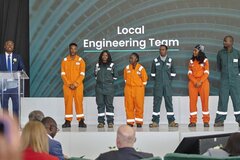Technologists are collaborative by nature. Whether its sharing lines of code or 3D printer specifications, technologists create communities of practice across corporations, startups, consortia, governments, universities, and households around the world.
The beauty of this community of technologists is that they frequently come together to solve big problems – and we’re seeing this today in the global fight against COVID-19.
Technology has become part of the response team – how we retool existing technology systems, how we uncover and analyze data, and how we use artificial intelligence (AI) and computing power – and is playing a critical role in the midst of this global emergency.
3D Printing PPE
When it became clear that demand would outpace supply for medical facilities that need equipment and PPE to safely serve patients, the additive manufacturing (also known as simply “additive”) community sprang to action.
Companies around the world with additive capabilities have identified ways to quickly develop and manufacture much needed equipment.
Baker Hughes global additive teams in the United States, Germany, Italy, the United Kingdom, and Saudi Arabia have joined the effort. The teams started a daily meeting and file sharing to identify approved designs, the materials that each site can print, ways to engage with local government and healthcare facilities, and other best practices. Global coordination is helping each additive facility take action locally.

“Collectively, our additive teams have produced more than 25,000 parts for customers and product companies,” said Mikhail Gladkikh, global lead for additive services. “Standing up our teams to react to the COVID-19 pandemic allows us to offer our expertise for the good of our communities.”
Working with government, additive consortia, universities, partners, and other practitioners has allowed each regional lab to match with local needs and approved product designs.
At the Additive Manufacturing Facility of Talamona, Italy, additive experts started the production of 3D-printed components for respirators, such as valves and adapters, based on a Isinnova patent that transforms Decathlon diving masks into emergency medical equipment. These components will be donated to the Red Cross in Calabria in Southern Italy, and distributed to local hospitals. The assembly of masks and the training of doctors who will use them will be coordinated by the Red Cross, in cooperation with the Civil Protection Department and the Health department of the Calabria region.
The first ten kits for respiratory masks have already been distributed in Italy. More kits will be produced in the upcoming weeks in partnership with the Baker Hughes Florence Additive Manufactory Lab and Montrose facility in Scotland.

"Thanks to Baker Hughes, Calabrian hospitals will breathe again", wrote the Red Cross Calabria Regional President in her thank you note to the company.
In Houston, the Additive Manufacturing Technology Center (AMTC) is working with TX/RX Labs, a nonprofit additive organization that validated face shield bracket designs and has already accepted more than 200 pieces printed by Baker Hughes to help meet local demand for 10,000 brackets. Because face shields come unassembled, in many cases healthcare workers have access to the shields but not the other parts.
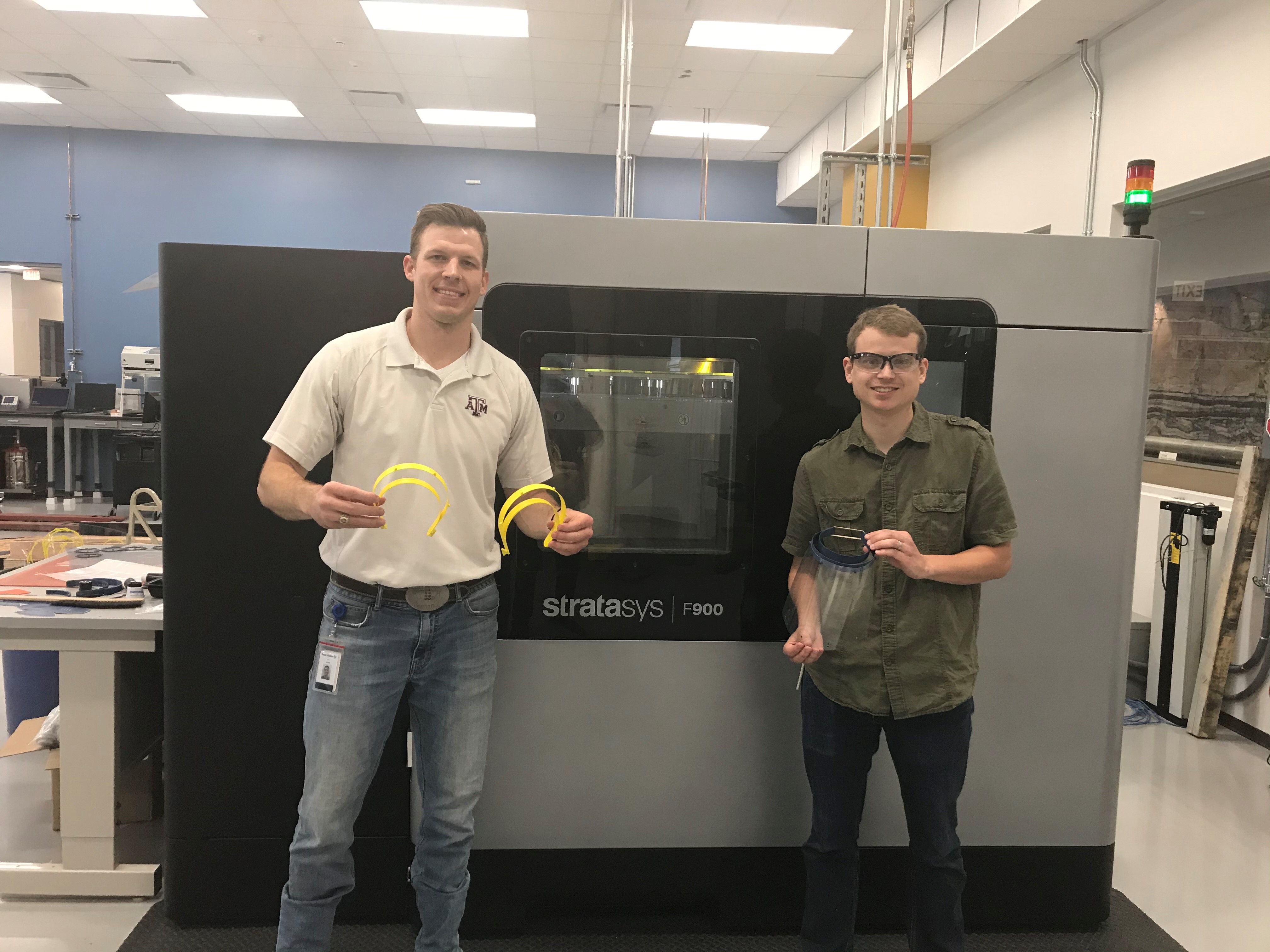
The AMTC is also collaborating with local universities to meet demand, working with the Baylor College of Medicine to deliver 3,000 face shields and brackets. The teams will continue printing these parts, with machines capable of running 24-hours per day without intervention.
In Oklahoma City, the Baker Hughes Energy Innovation Center (EIC) will deliver 2,000 face shields to the University of California San Francisco (UCSF), responding quickly to the emergence of California as a COVID-19 hotspot in the United States. An additional Baker Hughes facility in Claremore, Oklahoma is also printing brackets for two local healthcare facilities including the Oklahoma Cancer Specialists and Research Institute (OCSRI).
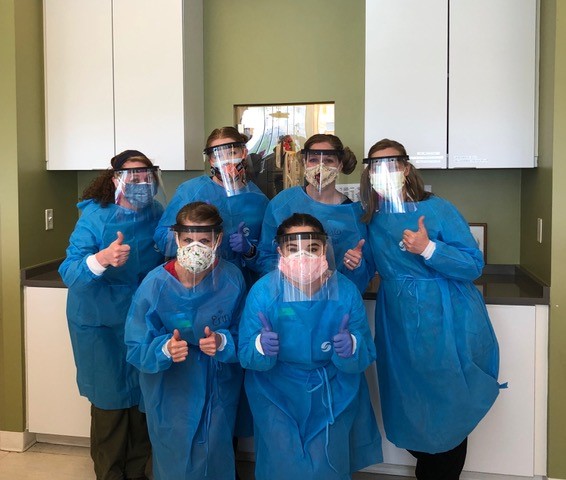
“The face shields provided are meeting a critical need for safety equipment used by our staff to protect the patients we are privileged to care for,” said Dr. Edward H. Yob of OCSRI.
The Baker Hughes additive team in Celle, Germany has supplied prototypes of face shields to the University Hospital Hamburg-Eppendorf and remains prepared to support additional local hospitals with up to 150 face shields weekly. The team also contacted other countries in Europe heavily impacted by the virus and will be supplying face shields to multiple hospitals in Madrid, Spain and companies that must remain open to serve medical facility needs.
Our additive team in Aberdeen, Scotland are actively delivering 2,000 face shields to the ICU Unit at the Royal Surrey Hospital and plan to deliver 1,000 face shields to NHS Grampian. Baker Hughes is working with partners including Shell and Total in the United Kingdom to help ramp up production where it’s needed most.
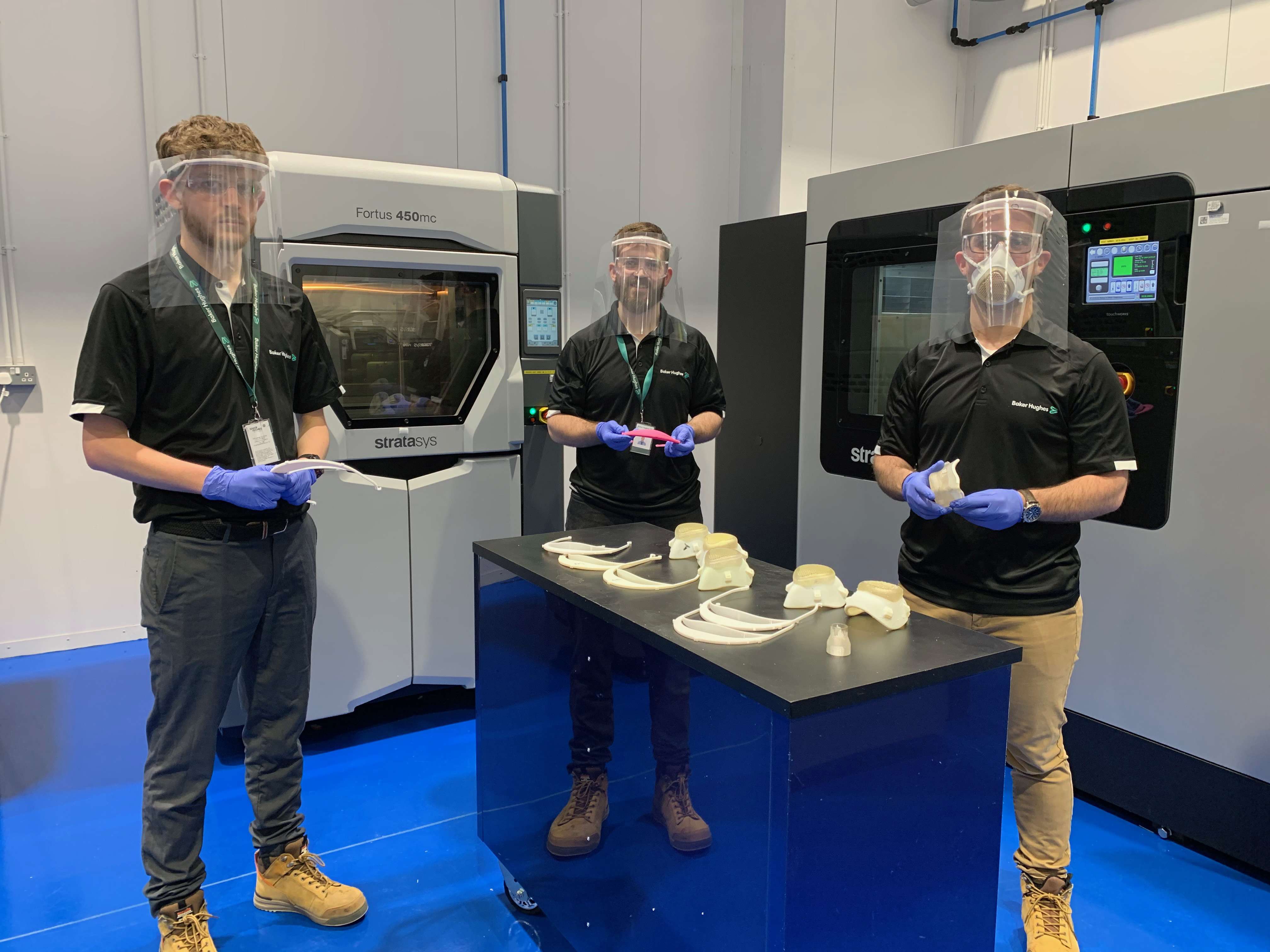
Baker Hughes has invested in additive because of the technology’s ability to provide customers with parts as an on-demand service. Today, this capability means the team can be part of the global emergency response to COVID-19.
Reverse Engineering Medical Equipment
Fast production of parts from manufacturers contributing to the fight against COVID-19 requires testing and validation. Waygate Technologies, part of the Baker Hughes Digital Solutions business, has been part of meeting this need as companies around the world look for ways to quickly produce critical equipment.
“We have a global network of technologies and engineers available to help and experience with fault diagnosis of other medical system components such as implants, stents and heart valves,” said Nicola Jannis, Senior Vice President of Waygate Technologies at Baker Hughes. “Offering support to medical facilities during this crisis is something we feel passionate about.”
Waygate is currently working with 3D Systems, a Rock Hill, South Carolina-based digital manufacturing solutions company, to advance an open sourcing project for ventilator designs, along with a consortium of experts from the University of California (UC) Davis, Livermore Instruments, and the National Strategic Research Institute.
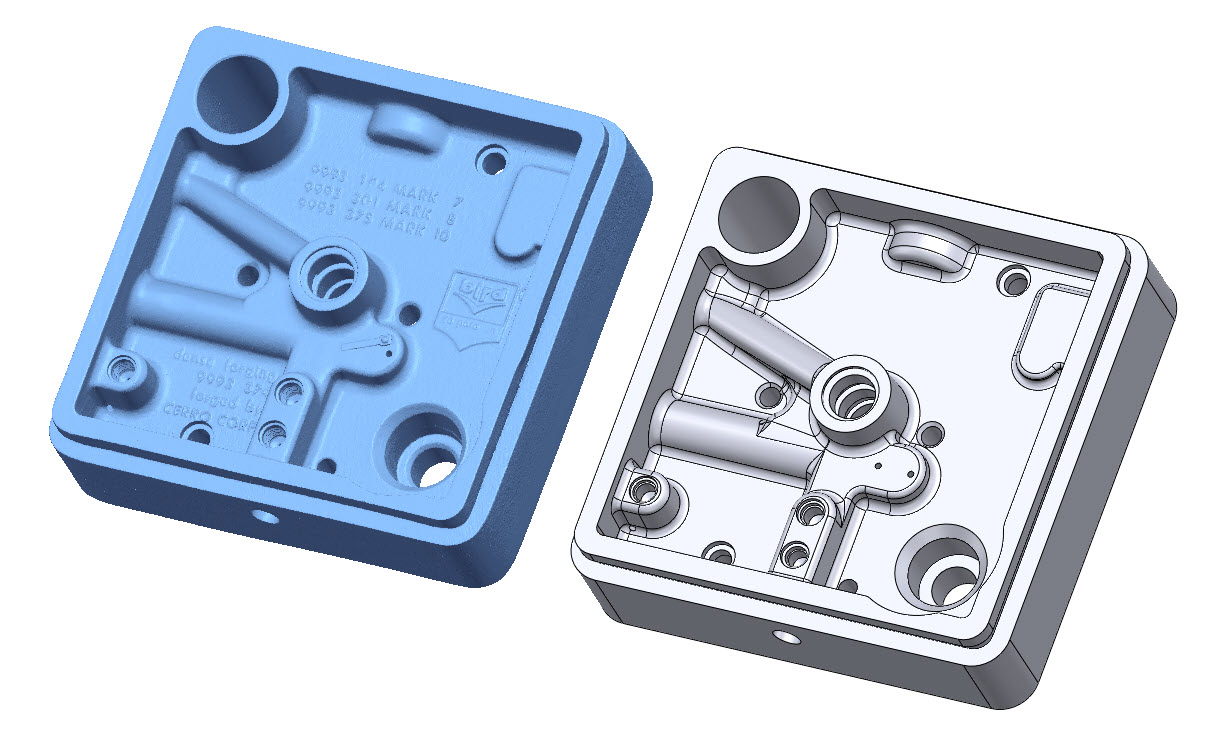
The project focuses on reviving and beginning production of a 1960’s era ventilator, the Bird Mark 7, as a safe and reliable device to serve current ventilator demand. In order to complete the Open Sourcing project and make available enough details for manufacturers to spin up production of the ventilators, the team needed to document the design and create manufacturing plans. Hundreds of man hours have already been spent reverse engineering individual components to create a digital assembly and production instructions.
3D Systems teamed up with Waygate Technologies to capture high quality industrial CT scans of the critical components of this relatively obsolete ventilator and provide a digital file that could be turned into a feature-based CAD models for printing within 24 hours. As a result of the collective effort, models were made publicly available April 1, with the consortium now seeking manufacturing partners as part of their own effort to contribute completed ventilators.
“The community that came together in this case spanned many geographies and professions,” Jannis said. “For our technology to play a role in something that could save lives is incredible. We have made this service available globally, and truly hope this is not the only success story.”
Computing Power + AI
As the COVID-19 pandemic rapidly spreads to new regions, early research from cases in China has become invaluable to the scientific and technology communities. This data offers nations that are weeks behind the initial outbreaks the opportunity to quickly identify trends and run simulations using advanced technology. Supercomputers, which hold capacity to ingest, store, and analyze data at speeds that dwarf the average computer, paired with Artificial Intelligence have become critical technologies to identify patterns and potentially lifesaving insights.
Technologists across the public and private sector have acted. The United States government joined IBM, Microsoft, and other leaders in computing to open supercomputers for this use, with IBM reporting early results of a set number of compounds that could help in development of a vaccine. Two Baker Hughes alliance partners, Microsoft and C3.ai, have announced a public-private partnership to use AI in battling COVID-19. As part of their response, C3.ai will also publish a COVID-19 data lake, aggregating and providing a single image of all publicly available data for analysis.
The deployment of each of these advanced solutions showcases the critical role of collaboration and technical excellence in response to a global crisis.
Energy Forward Stories
Sign up to stay up to date on the latest innovations and people shaping the future of our industry.

